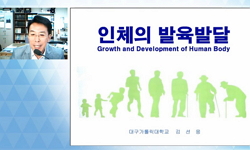[Purpose] Our study was performed to observe children with obesity by using accelerometers and identify their differences in blood lipid levels, insulin resistance, and adipokines based on their physical activity levels. [Methods] 197 obese children w...
http://chineseinput.net/에서 pinyin(병음)방식으로 중국어를 변환할 수 있습니다.
변환된 중국어를 복사하여 사용하시면 됩니다.
- 中文 을 입력하시려면 zhongwen을 입력하시고 space를누르시면됩니다.
- 北京 을 입력하시려면 beijing을 입력하시고 space를 누르시면 됩니다.


Effect of physical activity levels on blood lipids, insulin resistance, and adipokines in children with obesity
한글로보기https://www.riss.kr/link?id=A108918496
- 저자
- 발행기관
- 학술지명
- 권호사항
-
발행연도
2023
-
작성언어
English
- 주제어
-
등재정보
KCI등재,SCOPUS
-
자료형태
학술저널
- 발행기관 URL
-
수록면
34-40(7쪽)
- 제공처
-
0
상세조회 -
0
다운로드
부가정보
다국어 초록 (Multilingual Abstract)
[Methods] 197 obese children were classified into three groups based on their physical activity levels over a period of 7 days, using the average counts per minute: Sedentary Time (ST), Light Physical Activity (LPA), and Moderate to Vigorous Intensity Physical Activity (MVPA). Blood lipids, including triglycerides (TG), total cholesterol (TC), high-density lipoprotein cholesterol (HDL-C), and low-density lipoprotein cholesterol (LDL-C), were analyzed. Insulin resistance was assessed using the Homeostatic Model Assessment of Insulin Resistance (HOMA-IR) formula. Adipokines, including leptin and resistin, were measured. Our results were obtained through one-way analysis of variance was employed, with Scheffe post-hoc analysis. The statistical significance level was set at p < 0.05 for all analyses.
[Results] Results showed that the levels of blood lipids (TG: p<0.001, TC: p<0.01, LDL-C: p<0.001, HDL-C: p< 0.05) and adipokines (Leptin, Resistin: p<0.01) of children who had obesity and maintained moderate to vigorous physical activity were healthier than those who engaged in ST or LPA. Specifically, children with obesity engaging in MVPA demonstrated blood lipid and adipokine levels that were normal or close to normal. However, no significant differences in insulin resistance were observed in all groups.
[Conclusion] In summary, encouraging moderate to vigorous physical activity in children with obesity could help improve obesity indicators, such as blood lipids and adipokines.
[Purpose] Our study was performed to observe children with obesity by using accelerometers and identify their differences in blood lipid levels, insulin resistance, and adipokines based on their physical activity levels.
[Methods] 197 obese children were classified into three groups based on their physical activity levels over a period of 7 days, using the average counts per minute: Sedentary Time (ST), Light Physical Activity (LPA), and Moderate to Vigorous Intensity Physical Activity (MVPA). Blood lipids, including triglycerides (TG), total cholesterol (TC), high-density lipoprotein cholesterol (HDL-C), and low-density lipoprotein cholesterol (LDL-C), were analyzed. Insulin resistance was assessed using the Homeostatic Model Assessment of Insulin Resistance (HOMA-IR) formula. Adipokines, including leptin and resistin, were measured. Our results were obtained through one-way analysis of variance was employed, with Scheffe post-hoc analysis. The statistical significance level was set at p < 0.05 for all analyses.
[Results] Results showed that the levels of blood lipids (TG: p<0.001, TC: p<0.01, LDL-C: p<0.001, HDL-C: p< 0.05) and adipokines (Leptin, Resistin: p<0.01) of children who had obesity and maintained moderate to vigorous physical activity were healthier than those who engaged in ST or LPA. Specifically, children with obesity engaging in MVPA demonstrated blood lipid and adipokine levels that were normal or close to normal. However, no significant differences in insulin resistance were observed in all groups.
[Conclusion] In summary, encouraging moderate to vigorous physical activity in children with obesity could help improve obesity indicators, such as blood lipids and adipokines.
참고문헌 (Reference)
1 Abarca-Gómez L, "Worldwide trends in body-mass index, underweight, overweight, and obesity from 1975 to 2016 : a pooled analysis of 2416 population-based measurement studies in 128· 9million children, adolescents, and adults" 390 : 2627-2642, 2017
2 Steppan CM, "The hormone resistin links obesity to diabetes" 409 : 307-312, 2001
3 김재현 ; 윤성하 ; 황승식 ; 심정옥 ; 채현욱 ; 이연주 ; 이지혁 ; 김순철 ; 임도희 ; 양세원 ; 오경원 ; 문진수, "The 2017 Korean National Growth Charts for children and adolescents: development, improvement, and prospects" 대한소아청소년과학회 61 (61): 135-149, 2018
4 Janssen I, "Systematic review of the health benefits of physical activity and fitness in school-aged children and youth" 7 : 40-, 2010
5 Faul F, "Statistical power analyses using G* Power 3. 1 : Tests for correlation and regression analyses" 41 : 1149-1160, 2009
6 Gerber M, "Serum resistin levels of obese and lean children and adolescents : biochemical analysis and clinical relevance" 90 : 4503-4509, 2005
7 Cho HY, "Secular trends in hypertension and elevated blood pressure among Korean children and adolescents in the Korea National Health and Nutrition Examination Survey 2007-2015" 22 : 590-597, 2020
8 이명숙, "Research trends in obesity & obesogenic environments in Korea" 한국영양학회 13 (13): 461-472, 2019
9 Lim J, "Relationship of physical activity and sedentary time with metabolic health in children and adolescents measured by accelerometer : a narrative review" 9 : 709-, 2021
10 Abbasi F, "Relationship between obesity, insulin resistance, and coronary heart disease risk" 40 : 937-943, 2002
1 Abarca-Gómez L, "Worldwide trends in body-mass index, underweight, overweight, and obesity from 1975 to 2016 : a pooled analysis of 2416 population-based measurement studies in 128· 9million children, adolescents, and adults" 390 : 2627-2642, 2017
2 Steppan CM, "The hormone resistin links obesity to diabetes" 409 : 307-312, 2001
3 김재현 ; 윤성하 ; 황승식 ; 심정옥 ; 채현욱 ; 이연주 ; 이지혁 ; 김순철 ; 임도희 ; 양세원 ; 오경원 ; 문진수, "The 2017 Korean National Growth Charts for children and adolescents: development, improvement, and prospects" 대한소아청소년과학회 61 (61): 135-149, 2018
4 Janssen I, "Systematic review of the health benefits of physical activity and fitness in school-aged children and youth" 7 : 40-, 2010
5 Faul F, "Statistical power analyses using G* Power 3. 1 : Tests for correlation and regression analyses" 41 : 1149-1160, 2009
6 Gerber M, "Serum resistin levels of obese and lean children and adolescents : biochemical analysis and clinical relevance" 90 : 4503-4509, 2005
7 Cho HY, "Secular trends in hypertension and elevated blood pressure among Korean children and adolescents in the Korea National Health and Nutrition Examination Survey 2007-2015" 22 : 590-597, 2020
8 이명숙, "Research trends in obesity & obesogenic environments in Korea" 한국영양학회 13 (13): 461-472, 2019
9 Lim J, "Relationship of physical activity and sedentary time with metabolic health in children and adolescents measured by accelerometer : a narrative review" 9 : 709-, 2021
10 Abbasi F, "Relationship between obesity, insulin resistance, and coronary heart disease risk" 40 : 937-943, 2002
11 Steinberger J, "Relation of leptin to insulin resistance syndrome in children" 11 : 1124-1130, 2003
12 Mahadik SR, "Reduced serum resistin levels in diabetic patients : Study from western India" 3 : 155-159, 2009
13 Jiménez-Pavón D, "Physical activity, fitness, and serum leptin concentrations in adolescents" 160 : 598-603, 2012
14 Gill JMR, "Physical activity, fitness and cardiovascular disease risk in adults : interactions with insulin resistance and obesity" 110 : 409-425, 2006
15 Farpour-Lambert NJ, "Physical activity reduces systemic blood pressure and improves early markers of atherosclerosis in pre-pubertal obese children" 54 : 2396-2406, 2009
16 Trost SG, "Physical activity and determinants of physical activity in obese and non-obese children" 25 : 822-829, 2001
17 Mbalilaki JA, "Physical activity and blood lipids in rural and urban Tanzanians" 17 : 344-348, 2007
18 Cliff DP, "Objectively measured sedentary behavior, physical activity, and plasma lipids in overweight and obese children" 21 : 382-385, 2013
19 Miller JM, "Metabolic syndrome and physical activity levels in college students" 17 : 431-435, 2019
20 Reinehr T, "Long-term follow-up of cardiovascular disease risk factors in children after an obesity intervention" 84 : 490-496, 2006
21 Stefano GD, "Leptin serum concentrations predict the responsiveness of obese children and adolescents to weight excess reduction program" 24 : 1586-1591, 2000
22 Marcelino-Rodriguez I, "Inverse association of resistin with physical activity in the general population" 12 : e0182493-, 2017
23 Ferrannini E, "Insulin resistance and hzpersecretion in obesity" 100 : 1166-1173, 1997
24 Matthews DR, "Homeostasis model assessment : insulin resistance and β-cell function from fasting plasma glucose and insulin concentrations in man" 28 : 412-419, 1985
25 Paschoal MA, "Heart rate variability, blood lipids and physical capacity of obese and non-obese children" 93 : 239-246, 2009
26 Nyström CD, "Evaluation of the wrist-worn ActiGraph wGT3x-BT for estimating activity energy expenditure in preschool children" 71 : 1212-1217, 2017
27 Krekoukia M, "Elevated total and central adiposity and low physical activity are associated with insulin resistance in children" 56 : 206-213, 2007
28 Ackel-D’Elia C, "Effects of different physical exercises on leptin concentration in obese adolescents" 35 : 164-171, 2013
29 Cai L, "Effect of childhood obesity prevention programmes on blood lipids : a systematic review and meta-analysis" 15 : 933-944, 2014
30 Mantovani RM, "Early changes in adipokines from overweight to obesity in children and adolescents" 92 : 624-630, 2016
31 Havel PJ, "Control of energy homeostasis and insulin action by adipocyte hormones : leptin, acylation stimulating protein, and adiponectin" 13 : 51-59, 2002
32 Llewellyn A, "Childhood obesity as a predictor of morbidity in adulthood : a systematic review and meta-analysis" 17 : 56-67, 2016
33 Anderson PM, "Childhood obesity : trends and potential causes" 16 : 19-45, 2006
34 Sahoo K, "Childhood obesity : causes and consequences" 4 : 187-192, 2015
35 Haapala EA, "Cardiorespiratory fitness, physical activity, and insulin resistance in children" 52 : 1144-1152, 2020
36 Evenson KR, "Calibration of two objective measures of physical activity for children" 26 : 1557-1565, 2008
37 Sjöros T, "Both sedentary time and physical activity are associated with cardiometabolic health in overweight adults in a 1 month accelerometer measurement" 10 : 20578-, 2020
38 Baran J, "Blood lipid profile and body composition in a pediatric population with different levels of physical activity" 17 : 171-, 2018
39 Renninger M, "Associations between accelerometry measured physical activity and sedentary time and the metabolic syndrome : a meta-analysis of more than 6000 children and adolescents" 15 : e12578-, 2020
40 Schmitz KH, "Association of physical activity with insulin sensitivity in children" 26 : 1310-1316, 2002
41 Thavendiranathan P, "Association between physical activity, adiposity, and lipid abnormalities in children with familial hyperlipidemia" 14 : 59-64, 2007
42 Mesa JL, "Aerobic physical fitness in relation to blood lipids and fasting glycaemia in adolescents : influence of weight status" 16 : 285-293, 2006
43 Jamurtas AZ, "Adiponectin, resistin, and visfatin in childhood obesity and exercise" 27 : 454-462, 2015
44 Rabe K, "Adipokines and insulin resistance" 14 : 741-751, 2008
45 Boström P, "A PGC1-α-dependent myokine that drives brown-fat-like development of white fat and thermogenesis" 481 : 463-468, 2012
동일학술지(권/호) 다른 논문
-
Potential involvement of neutrophils on exercise effects in breast cancer malignancy
- 한국운동영양학회
- 고강은
- 2023
- KCI등재,SCOPUS
-
Rosae multiflorae fructus regulates the lipogenesis in high-fat diet-induced NAFLD mice model
- 한국운동영양학회
- 김기봉
- 2023
- KCI등재,SCOPUS
-
- 한국운동영양학회
- 김기봉
- 2023
- KCI등재,SCOPUS
-
Impact of the ketogenic diet on body fat, muscle mass, and exercise performance: a review
- 한국운동영양학회
- 정나나
- 2023
- KCI등재,SCOPUS




 KISS
KISS






